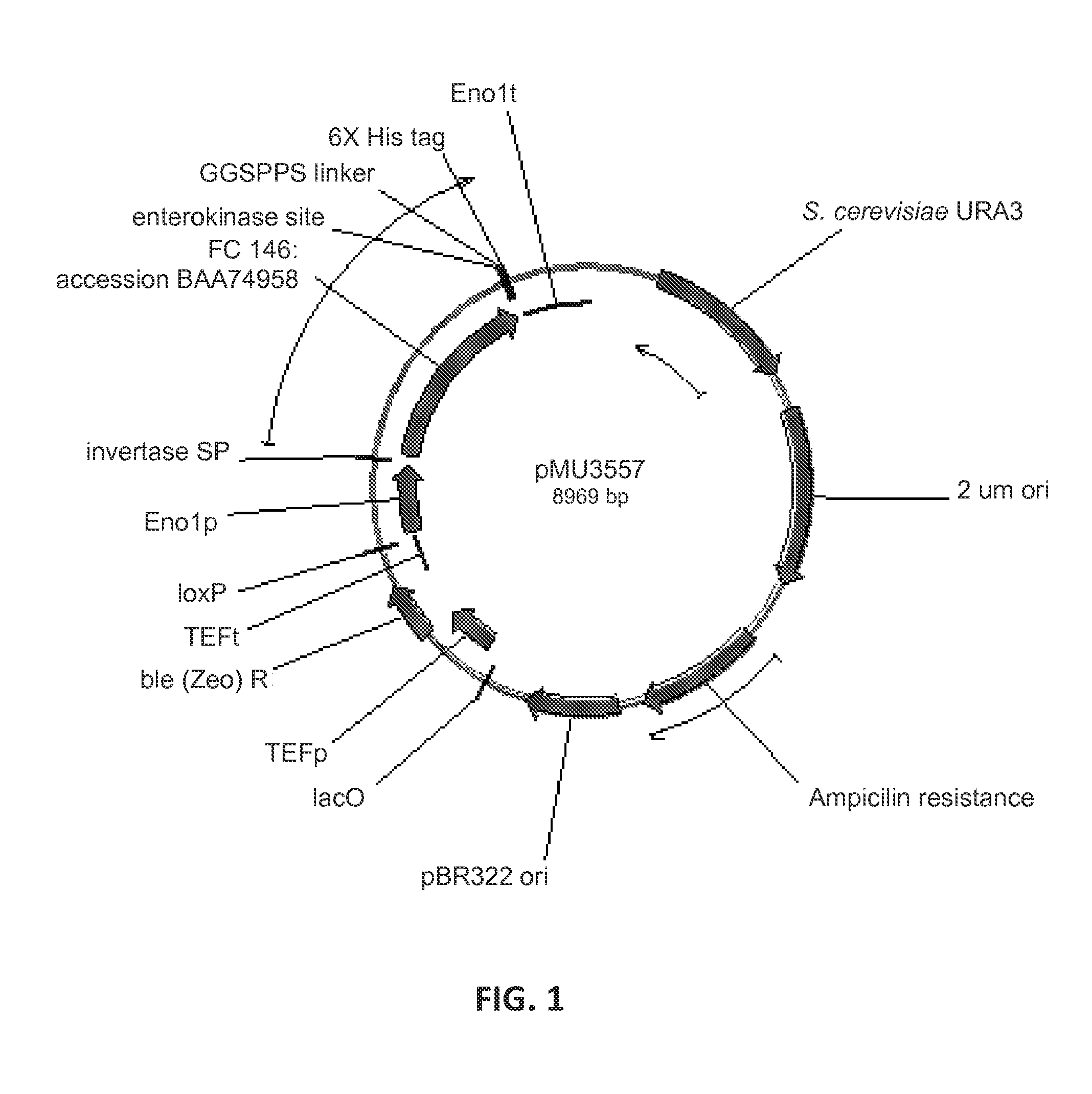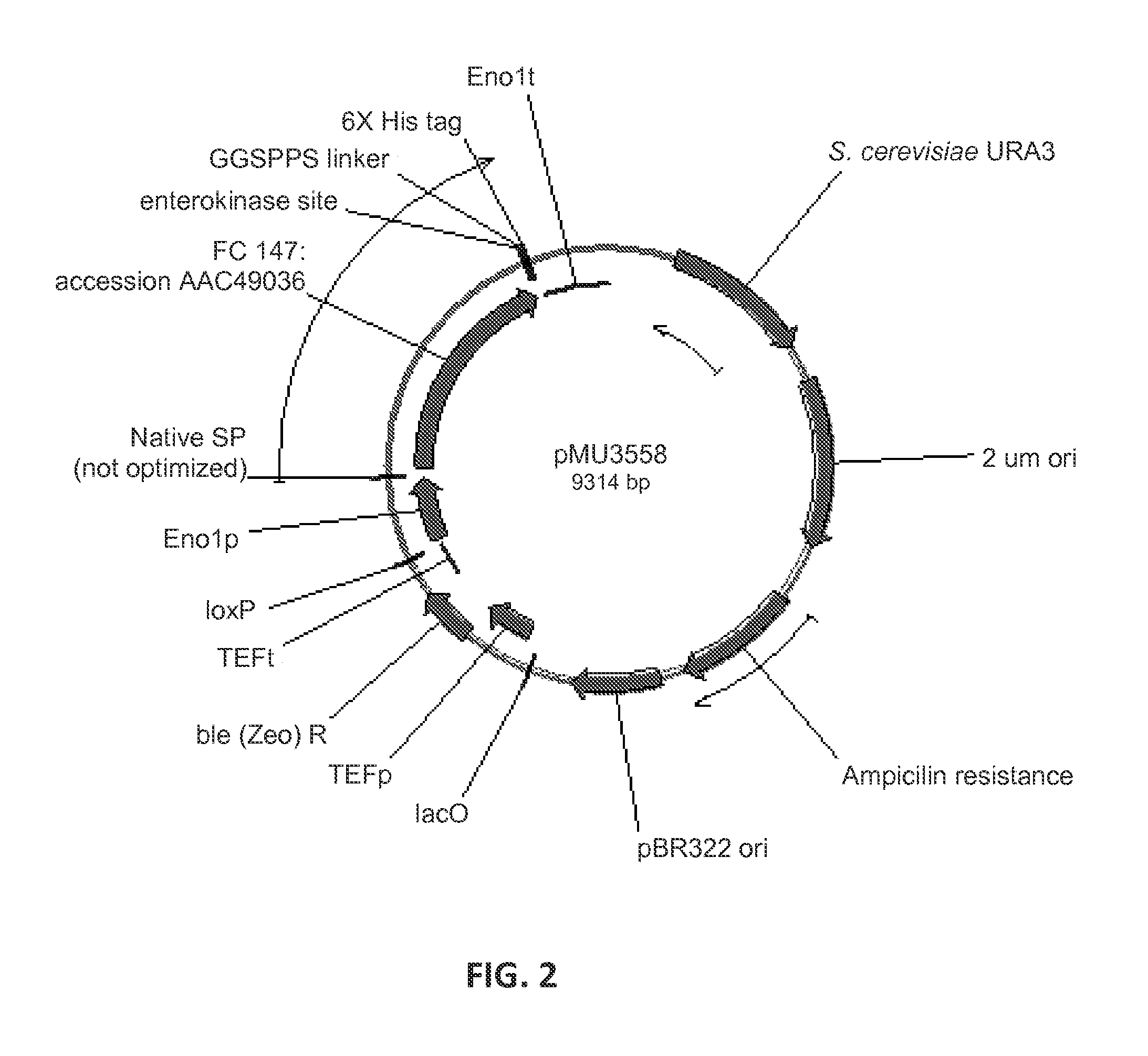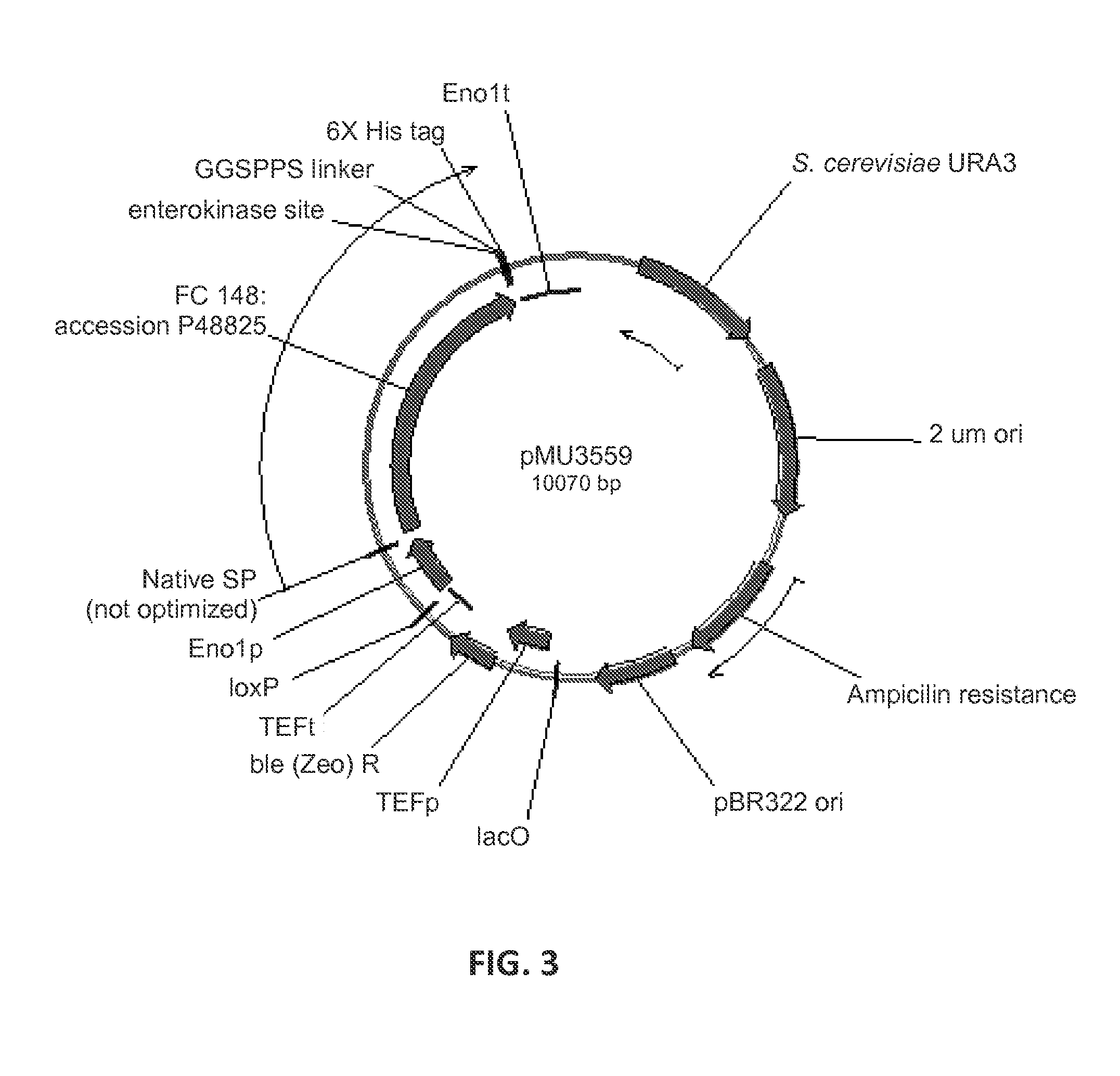Expression of beta-glucosidases for hydrolysis of lignocellulose and associated oligomers
- Summary
- Abstract
- Description
- Claims
- Application Information
AI Technical Summary
Benefits of technology
Problems solved by technology
Method used
Image
Examples
example 1
Screening of Yeast Produced Beta-Glucosidases for Efficient Cellobiose and Oligomer Hydrolysis
[0246]In order to find beta-glucosidase (BGL) enzymes that are well expressed in Saccharomyces cerevisiae, and highly active on hardwood derived substrates, several BGLs were designed and synthesized by DNA 2.0. The enzymes and sequences tested are below in Table 4.
TABLE 4Beta-glucosidase enzymes tested for expression in yeastCazySource(FC)#familyE.C. #ActivityOrganismAccession #Strain #Plasmid #141GH33.2.1.21Beta-glucosidaseSaccharomycopsis fibuligeraP22506M1429pMU1172*146GH13.2.1.21Beta-glucosidaseHumicola griseaBAA74958M4860pMU3557147GH13.2.1.21Beta-glucosidaseCandida WickerhamiiAAC49036pMU3558148GH33.2.1.21Beta-glucosidaseAspergillus AculeatusP48825M4861pMU3559149GH33.2.1.21Beta-glucosidaseAspergillus oryzaeXP_001816831M4862pMU3560150GH33.2.1.21Beta-glucosidasePenicillium decumbensADB82653M4863pMU3561151GH33.2.1.21Beta-glucosidaseChaetomium globosumXP_001229937M4864pMU3562152GH33.2.1.21...
PUM
| Property | Measurement | Unit |
|---|---|---|
| Fraction | aaaaa | aaaaa |
| Fraction | aaaaa | aaaaa |
| Fraction | aaaaa | aaaaa |
Abstract
Description
Claims
Application Information
 Login to View More
Login to View More - R&D
- Intellectual Property
- Life Sciences
- Materials
- Tech Scout
- Unparalleled Data Quality
- Higher Quality Content
- 60% Fewer Hallucinations
Browse by: Latest US Patents, China's latest patents, Technical Efficacy Thesaurus, Application Domain, Technology Topic, Popular Technical Reports.
© 2025 PatSnap. All rights reserved.Legal|Privacy policy|Modern Slavery Act Transparency Statement|Sitemap|About US| Contact US: help@patsnap.com



